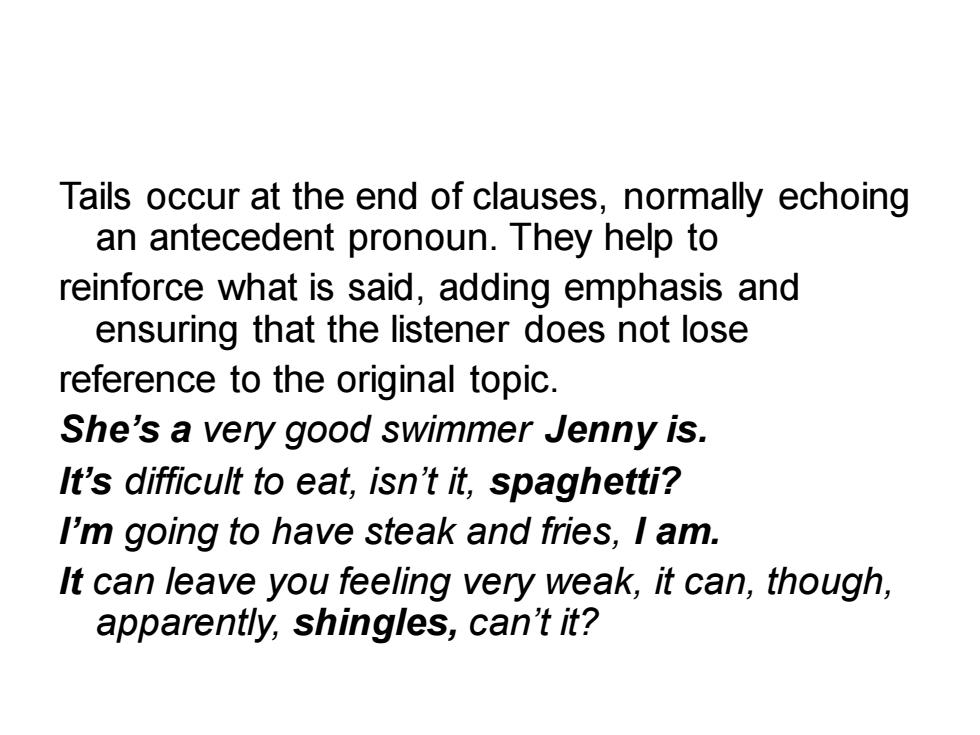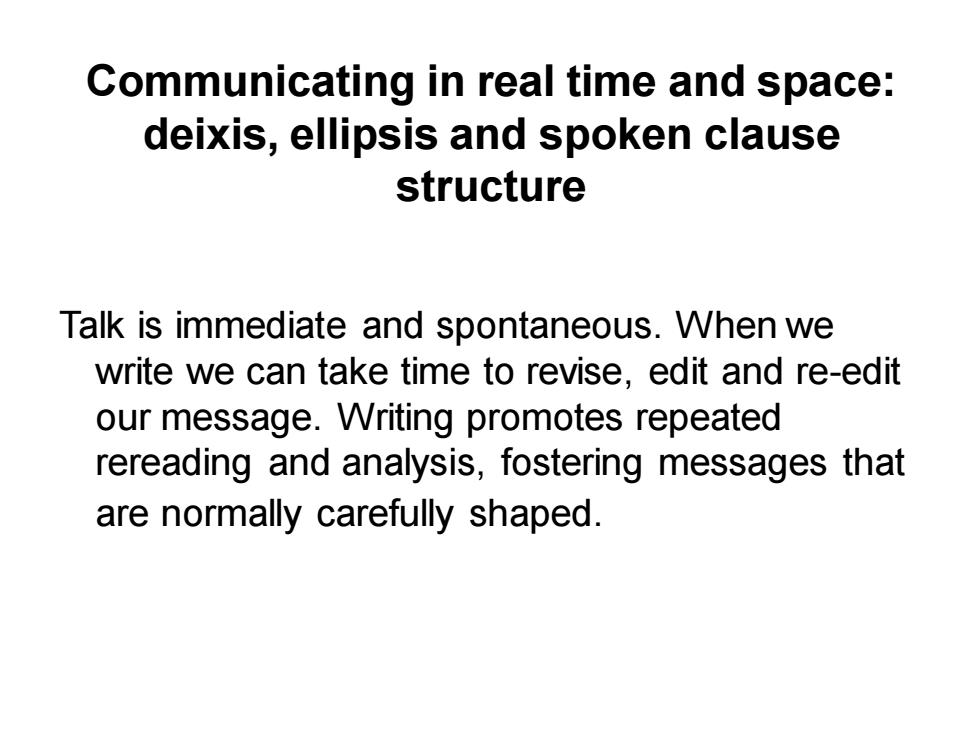
A:What do you think we should do about it? B:Well,I'm going to think about it.I don't know at the moment. Well is also used to indicate that the speaker is saying something that contrasts with what has just been said.In addition,it can be used to signal the end of an exchange. Well,that's all for now.We'll see you again at the same time next week
A: What do you think we should do about it? B: Well, I’m going to think about it. I don’t know at the moment. Well is also used to indicate that the speaker is saying something that contrasts with what has just been said. In addition, it can be used to signal the end of an exchange. Well, that’s all for now. We’ll see you again at the same time next week

Heads and tails These are words and phrases placed at the start or finish of utterances in ways that help the listener to orient to the topic or remember what has been said. A head involves a noun or noun phrase placed strategically at the beginning of a clause which is then followed by a subsequent pronoun to ensure that the listener follows the reference
Heads and tails These are words and phrases placed at the start or finish of utterances in ways that help the listener to orient to the topic or remember what has been said. A head involves a noun or noun phrase placed strategically at the beginning of a clause which is then followed by a subsequent pronoun to ensure that the listener follows the reference

The white house on the corner,is that where she lives? That book over there,the one with the red cover,that's it,can you pass it over here? That girl,Jill,her sister,she works in our office. Paul,in this job that he's got now,when he goes into the office he's never quite sure where he's going to be sent. A friend of mine,his uncle had the taxi firm when we had the wedding. His cousin in Beccles,her boyfriend,his parents bought him a Ford Escort for his birthday
The white house on the corner, is that where she lives? That book over there, the one with the red cover, that’s it, can you pass it over here? That girl, Jill, her sister, she works in our office. Paul, in this job that he’s got now, when he goes into the office he’s never quite sure where he’s going to be sent. A friend of mine, his uncle had the taxi firm when we had the wedding. His cousin in Beccles, her boyfriend, his parents bought him a Ford Escort for his birthday

Tails occur at the end of clauses,normally echoing an antecedent pronoun.They help to reinforce what is said,adding emphasis and ensuring that the listener does not lose reference to the original topic. She's a very good swimmer Jenny is. It's difficult to eat,isn't it,spaghetti? I'm going to have steak and fries,I am. It can leave you feeling very weak,it can,though, apparently,shingles,can't it?
Tails occur at the end of clauses, normally echoing an antecedent pronoun. They help to reinforce what is said, adding emphasis and ensuring that the listener does not lose reference to the original topic. She’s a very good swimmer Jenny is. It’s difficult to eat, isn’t it, spaghetti? I’m going to have steak and fries, I am. It can leave you feeling very weak, it can, though, apparently, shingles, can’t it?

Communicating in real time and space: deixis,ellipsis and spoken clause structure Talk is immediate and spontaneous.When we write we can take time to revise,edit and re-edit our message.Writing promotes repeated rereading and analysis,fostering messages that are normally carefully shaped
Communicating in real time and space: deixis, ellipsis and spoken clause structure Talk is immediate and spontaneous. When we write we can take time to revise, edit and re-edit our message. Writing promotes repeated rereading and analysis, fostering messages that are normally carefully shaped